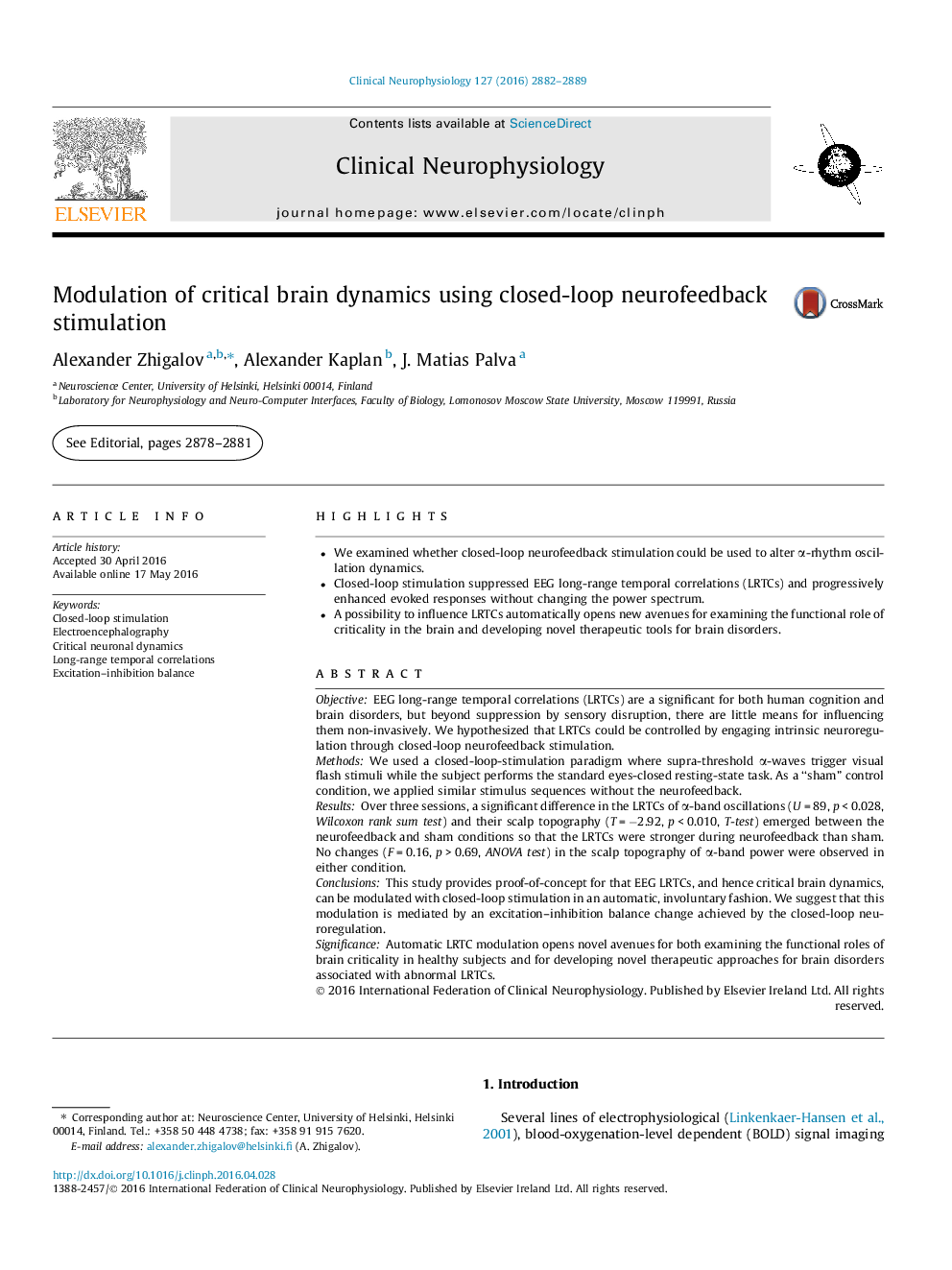| Article ID | Journal | Published Year | Pages | File Type |
|---|---|---|---|---|
| 3042673 | Clinical Neurophysiology | 2016 | 8 Pages |
•We examined whether closed-loop neurofeedback stimulation could be used to alter α-rhythm oscillation dynamics.•Closed-loop stimulation suppressed EEG long-range temporal correlations (LRTCs) and progressively enhanced evoked responses without changing the power spectrum.•A possibility to influence LRTCs automatically opens new avenues for examining the functional role of criticality in the brain and developing novel therapeutic tools for brain disorders.
ObjectiveEEG long-range temporal correlations (LRTCs) are a significant for both human cognition and brain disorders, but beyond suppression by sensory disruption, there are little means for influencing them non-invasively. We hypothesized that LRTCs could be controlled by engaging intrinsic neuroregulation through closed-loop neurofeedback stimulation.MethodsWe used a closed-loop-stimulation paradigm where supra-threshold α-waves trigger visual flash stimuli while the subject performs the standard eyes-closed resting-state task. As a “sham” control condition, we applied similar stimulus sequences without the neurofeedback.ResultsOver three sessions, a significant difference in the LRTCs of α-band oscillations (U = 89, p < 0.028, Wilcoxon rank sum test) and their scalp topography (T = −2.92, p < 0.010, T-test) emerged between the neurofeedback and sham conditions so that the LRTCs were stronger during neurofeedback than sham. No changes (F = 0.16, p > 0.69, ANOVA test) in the scalp topography of α-band power were observed in either condition.ConclusionsThis study provides proof-of-concept for that EEG LRTCs, and hence critical brain dynamics, can be modulated with closed-loop stimulation in an automatic, involuntary fashion. We suggest that this modulation is mediated by an excitation–inhibition balance change achieved by the closed-loop neuroregulation.SignificanceAutomatic LRTC modulation opens novel avenues for both examining the functional roles of brain criticality in healthy subjects and for developing novel therapeutic approaches for brain disorders associated with abnormal LRTCs.
